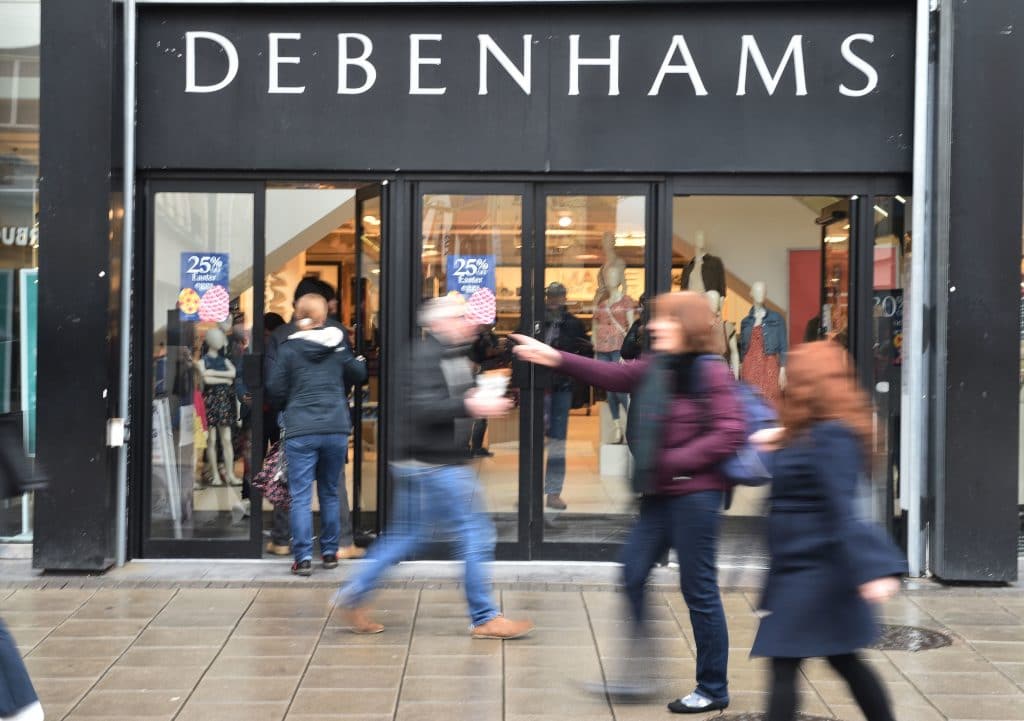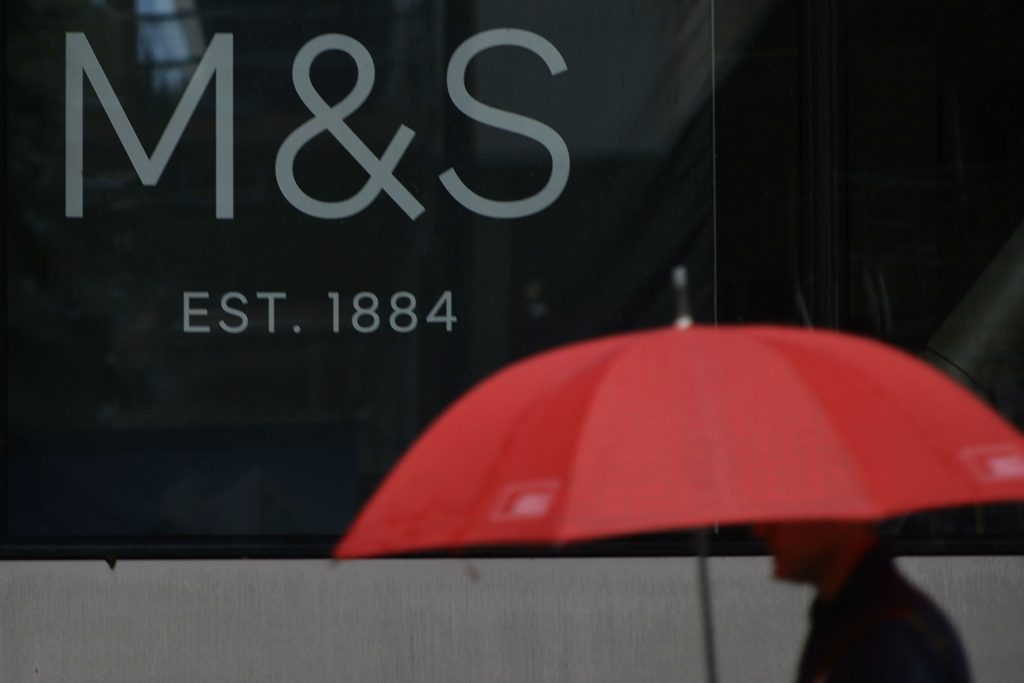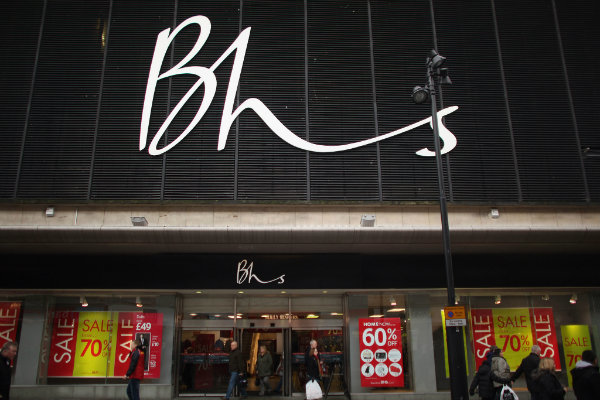A BRIEF TIMELINE
1778: Debenhams is formed as a business by William Clark who begins trading at 44 Wigmore Street in London.
1813: Clark teams up with William Debenham and the corporate name is changed to Clark & Debenham.
The shop is later renamed Cavendish House and carries drapery, silks, hosiery, lace and family mourning goods.
1818: The first store outside London opens in Cheltenham and is an exact replica of the Wigmore Street store.
1823: Clark and Debenham open a small drapery business at 3 Promenade Rooms, Cheltenham, selling a selection of silks, muslins, shawls, gloves, lace and fancy goods. The new store flourishes in terms of sales.
1905: The business is incorporated as Debenhams Limited.
1920: Debenhams purchases Harvey Nichols.
1928: The involvement of the Debenham family eventually ends and the business becomes a public company for the first time. The company is listed on the London Stock Exchange.
1950: Debenhams becomes the UK’s largest department store group, owning 84 companies and 110 stores.
1980: Debenhams stops selling clothes with real animal fur after having its Romford, Luton, and Harrow stores fire-bombed by members, with the worst attack being on the Luton store.
1985: Debenhams – including Harvey Nichols – is acquired by the Arcadia Group, then known as the Burton Group.
1991: Harvey Nichols leaves Debenhams’ ownership after being sold to Dickson Concepts.
1993: Debenhams introduces the “Designers at Debenhams” brand, created by Belinda Earl.
The initiative saw designer names and brands placed at high street prices. The brands included Jasper Conran, John Rocha John, Butterfly by Matthew Williamson, H! by Henry Holland, Star by Julien Macdonald, Frost French, Janet Reger, Ted Baker, St George by Duffer, Jeff Banks, and Ben de Lisi.
1997: Debenhams’ first international franchise store opens in Bahrain.
1998: Debenhams demerges from Arcadia and is once again listed as a separate company on the London Stock Exchange.
2000: Belinda Earl is appointed chief executive, and under her leadership Debenhams expands
2003: In September, Debenhams opens its largest British store at the newly constructed Bullring shopping centre in Birmingham.
Private consortium Baroness Retail Limited acquires the department store in November.
The consortium comprised CVC Capital Partners, Texas Pacific Group, Merrill Lynch Global Private Equity, and management.
2006: Debenhams returns to the London Stock Exchange again
2009: Debenhams purchases fashion retailer Principles in March following its administration.
Principles operated concessions within 121 Debenhams stores.
In November, Debenhams acquires Magasin du Nord, a Danish department store chain.
2010: In July, Debenhams acquires shoe retailer Faith after it goes into administration.
During the same month, Debenhams launches its first international website in Germany.
2013: The Debenhams flagship store on London’s Oxford Street begins its £40 million refurbishment.
In March, Debenhams issues a profit warning, saying its sales have been heavily impacted by poor weather.
The company’s trading statement for the 17 weeks up to December 28 is posted on December 31 and reveals a dip in pre-tax profit from £115 million to £85 million.
2014: Debenhams’ chief financial officer Simon Herrick resigns on January 2 after facing criticism over his financial decisions.
Sports Direct purchases 4.6 per cent of Debenhams shares worth £46 million on January 13.
The Mike Ashley-owned sports retailer said it would be a supportive stakeholder of Debenhams after purchasing 56.8 million shares.
Sports Direct sold its shares on January 16, despite choosing to buy further shares up to a total of 6.6 per cent.
The Oxford Street flagship store’s refurbishment is completed in February.
In June, Debenhams announced a trial of Sports Direct concessions in its Harrow and Southsea stores.
Debenhams also launched trials of Costa Coffee and Mothercare concessions within stores.
2016: In October, the company announced it would begin to focus more on food, beauty products and gifts rather than just clothing.
In May, Sergio Bucher joins Debenhams, and is appointed chief executive in October.
April 2017: Bucher unveiled his Debenhams Redesigned turnaround strategy which featured a radical shake-up of the business as well as goals to make Debenhams a “destination” shop with an improved online offering and new in-store customer experience initiatives.
Investors don’t respond too kindly, with shares dropping five per cent the day after the strategy was launched.
August 2017: Ashley secures 21 per cent of the shares which gave him over 10 per cent of voting rights in the company.
Debenhams opens an 80,000sq ft store in Stevenage, the first new store under Bucher’s helm, who created a new layout and format with the emphasis on encouraging customers to stay longer.
February 2018: Debenhams said there would be a reduction of up to 320 store management roles across the business by the end of March.
March 2018: Sports Direct increases its holding in the company to 29.7 per cent, just below the level whereby it must launch a takeover as per City rules.
June 2018: Debenhams posts its second profit warning of the year (and not the last one, either), expecting full-year pre-tax profits to come in between £35 million and £40 million, down from previous estimates of £50.3 million. It blamed competitor discounting and market weakness.
September 2018: Debenhams undergoes a complete rebrand and modernisation as it aims to “signify overtly to customers that Debenhams is changing”.
October 2018: Debenhams announces the largest loss in its 206-year history, a pre-tax loss of £491 million. It also announced plans to close up to 50 of its 165 stores in the next three to five years, leading to a potential loss of 4000 jobs.
November 2018: Influential credit raiting agency Moody’s downgrades Debenhams for the second time that year
December 2018: Debenhams publishes a viability statement in which it revealed an internal strategic assessment proved that the department store chain would survive the next three years.
A few days later, Ashley writes a letter to Debenhams, first seen by The Daily Telegraph, urging Bucher to accept the £40 million interest-free loan from Sports Direct to avert a looming collapse.
January 2019: Debenhams posts lacklustre results from the crucial Christmas trading period. For the six-week period ending January 5, like-for-like sales were down 3.4 per cent, underpinned by UK decline of 3.6 per cent. It added that gross transactional value fell by 3.8 per cent. The department store also revealed it had a net debt of £286 million.
Several days later, Debenhams plunged into crisis after chairman Sir Ian Cheshire was forced to step down following a shareholder coup, led by Ashley’s Sports Direct, at the retailer’s AGM.
Sergio Bucher was also voted off the Debenhams board, although he had the support of shareholders to continue on as chief executive.
Moody’s responds again with another credit downgrade for Debenhams.
February 2019: Debenhams secures a short-term cash injection of £40 million after lenders agree to extend the retailer’s overdraft limit amid refinancing talks to secure its financial future. Speculation is also rife that Debenhams was mulling a CVA.
March 5: Debenhams took a hit in the stock market after it issued a fresh profit warning thanks to ongoing pressure on sales as refinancing talks with lenders continues.
In an unscheduled trading update, it attributed the warning on trading headwinds, costs associated with efforts to put the retailer on a secure financial footing and macroeconomic uncertainties. Like-for-like sales were down 4.6 per cent for the period.
March 22: Debenhams secures a £200 million cash injection to help save the business and stave off a takeover campaign being led by Mike Ashley and Sports Direct.
Ashley was reportedly in talks with Debenhams’ interim chairman Terry Duddy about being involved in the refinancing.
March 27: Sports Direct announces it is mulling the possibility of tabling a takeover offer of £61.4 million for Debenhams.
Ashley said its “possible firm offer” would be for the remaining 70 per cent of shares in the beleaguered department store chain that it does not already own.
Ashley would pay 5p per share, or £43 million, adding it would also assist Debenhams in addressing its immediate funding requirements.
March 28: Debenhams is given the green light from bondholders to undergo a £200 million refinancing scheme. The retailer was expected to explore a debt-for-equity swap and a pre-pack administration as part of its restructure, although emerged as the most likely option as it does not require shareholder approval. However, both options would lead to a complete wipe out of existing shareholders such as Ashley, who controls the biggest stake in Debenhams.
March 29: Ashley hits out at Debenhams’ advisers after bondholders approved a refinancing scheme. The refinancing provides the beleaguered retailer with facilities of £101 million and £99 million, and includes the £40 million to replace the interim borrowing it announced in February. The first facility of £101 million was drawn down immediately.
The second facility would only be made available if Sports Direct – or any other shareholder with a stake of more than 25 per cent – agreed to participate in a “comprehensive solution” to secure the future of the department store. They had a deadline of April 8.
If an agreement is not met, Debenhams would only be access the remaining £99 million facility “upon transfer of those subsidiaries into the ownership of a lender-approved entity”.
April 1: Sports Direct urges shareholders to resist Debenhams’ £200 million refinancing plan as the public row between the two firms intensifies.
April 4: Debenhams slugged with yet another Moody’s credit rating downgrade
April 8: Ashley has accuses the Debenhams board of “falsehoods and denials” and urged two directors to take a lie detector test as Sports Direct tabled a £150 million rescue offer. This was later revised at the last-minute to £200 million.
April 9: Debenhams announces it has gone into administration. The department store appoints joint administrators from FTI Consulting, who immediately sell the PLC part of the retailer to a newly incorporated company controlled by secured lenders in a pre-pack administration deal. The company announces its shares have been suspended and will be cancelled with effect from April 10.
April 10: Sports Direct labels Debenhams’ administration a “national scandal”, and calls for the process to be reversed.
April 11: Sports Direct issues a threat of legal action to Debenhams’ administrators after its near-30 per cent stake in the department store retailer was wiped out.
April 18: Debenhams’ chief executive Segio Bucher exits office with a rumoured £700,000 pay out. Terry Duddy takes on the role of executive chairman on an interim basis as a new chief executive is sought.
April 24: Sky News reports that the new owners of Debenhams could launch a CVA by the end of that week, which includes plans to close up to 20 stores immediately after Christmas. These store closures form part of the already-announce 50 store closures announced in late 2018, although a CVA would speed up the process. A sale of the business is also still on the table, as per the pre-pack administration deal.
THE REASONS
Debenhams may have issued several disappointing trading updates and a series ofprofit warnings for the past nine months or so, but just how did it reach this point?
The chain crashed to an annual loss of nearly £500 million last year and confirmed plans to close almost a third of its stores. It’s widely argued that the collapse is simply down to Debenhams having too many stores.
“Big rents, high rate liabilities, large staffing needs and leases that were difficult to give up all conspired to create a beast.”
With 165 stores across the country, its sales were falling while costs rising.
Meanwhile, Bucher said Debenhams was paying too much rent for the majority of its stores. The firm’s annual rent bill is nearly £300 million, or about 13 per cent of its annual turnover.
Another reason for Debenhams’ downfall could be its lack of innovation. The department store retailer failed to connect with millennial shoppers and was extremely late to offer experiential retail compared to competitors such like Selfridges and even John Lewis.
The department store was also late to improving its online offering, which could have be a downfall as Brits are spending more online and visiting the high street less. With a sprawling estate of stores to pay for, Debenhams has been hit hard by this shift.
Robert Hayton, head of UK business rates at real estate advisery firm Altus Group, told Retail Gazette: “Big rents, high rate liabilities, large staffing needs and leases that were difficult to give up all conspired to create a beast that was unable to adapt in a fast changing retail environment.”
“The news of Debenhams serves as a stark reminder that bricks and mortar retailers urgently need to adapt in order to survive”
Leigh Moody, UK managing director at computer software firm Soti, agreed: “The news of Debenhams serves as a stark reminder that bricks and mortar retailers urgently need to adapt in order to survive in today’s competitive retail landscape.
“A combination of increasing rents and business rates, along with consumers taking their shopping online, has resulted in the demise of a number of established retailers.”
Simon Reynolds, strategy director of branding consultancy Landor, believes the department store “has been neglected for too long”. He added that the news “will surely sound warning bells to other struggling retailers”.
Meanwhile, senior retail analyst at data and analytics company GlobalData, Sofie Willmott told Retail Gazette that the cash injection from Debenhams’ new owners will not be enough to turn around the failing department store’s fortunes.
“Although Sergio Bucher’s redesigned strategy, announced almost two years ago, addresses the retailer’s problem areas, it has not been rolled out fast enough and as a result most consumers have seen little change at Debenhams, other than a minor adjustment to its logo,” she said.
Click here to sign up to Retail Gazette’s free daily email newsletter


















